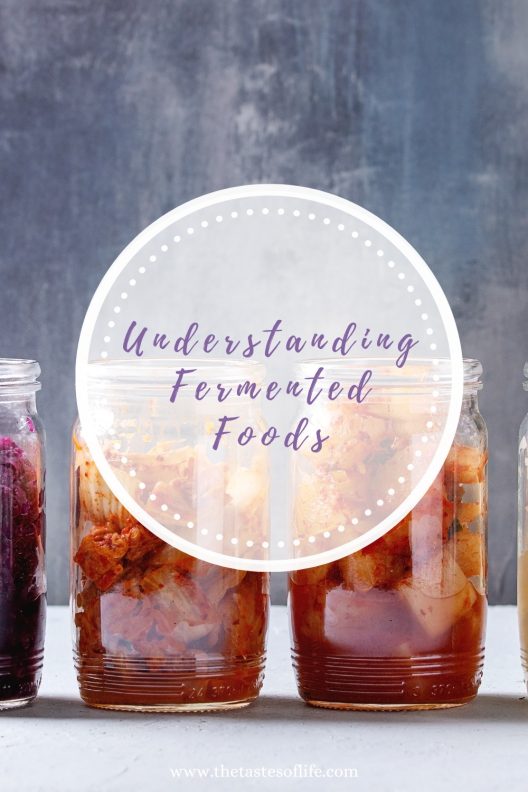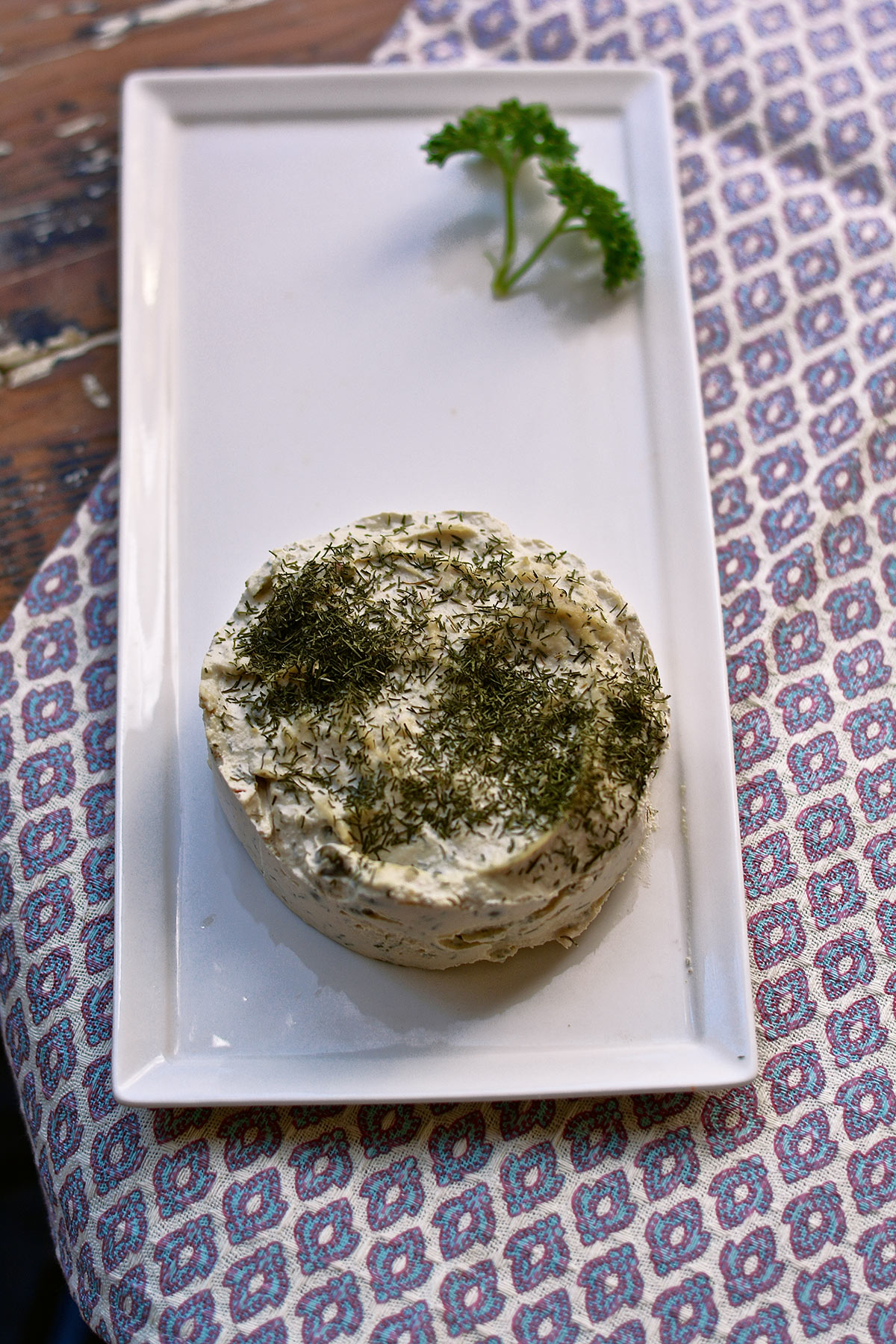Understanding Fermented Foods

Discover the Fascinating World of Fermented Foods
Fermented foods are unique and exciting, and there is plenty of research and historical information available regarding how fermented food has been used in the past. Although fermentation was only considered as a method for preserving food for many years, we now know that fermenting helps certain yeast strains and beneficial bacteria to accumulate in our food, transforming our food into a powerhouse of nutrients that supports our gut and the rest of our bodies.
Most fermented foods are made through an anaerobic process, which does not require the use of any oxygen. This means that the good bacteria found in our food can produce lactic acid bacteria and other acids without also forming any mold or “bad bacteria” in the process.
Kimchi, sauerkraut, cultured vegetables, and beet kvass are generally made with salt brine. However, whey (from strained yogurt) or a vegetable starter can be used for homemade versions. Kombucha, water kefir, and milk kefir also use an anaerobic process for fermentation but require the use of a “SCOBY” (symbiotic culture of bacteria and yeast), meaning that both beneficial strains of bacteria and yeast are present. An aerobic fermentation process requiring oxygen for the development of wild yeast, can be found in wine, beer, and “starters” used to make sourdough bread.
Due to the presence of various types of lactic acid bacteria, most fermented foods produce lactic acid. Different strains found in vinegars and wines like real balsamic vinegar and apple cider vinegar produce acetic acid. Lactic acid and acetic acid are both very beneficial. A study [3] compared the microbiomes of rural South Americans, Africans, and Japanese peoples who consume a traditional diet, including an abundance of fermented foods, to the microbiomes of people living in western urban centers. Researchers found that the people who consumed the traditional diet had lower levels of pathogenic strains such as clostridium (what is that?) and higher levels of beneficial bifidus and lactobacillus bacterial strains than people living in western urban centers.
Fermented foods are helpful in a variety of individual ways. Below you will find some information on the benefits of fermented foods and learning more about each one should make it easier for you to choose the right ones that fit your unique needs. However, the best way to figure out what is best for you is to try them!
How to use fermented foods so that you get the benefits:
– Consume fermented foods on their own as a snack or with a meal.
– You can use kombucha, yogurt, kefir, pureed or juiced sauerkraut in salad dressings (they will replace some of the vinegar because they are all acids too).
– Kimchi, cultured vegetables, and sauerkraut can be added on top of soups (after the soup has been ladled into the serving bowl).
– Kombucha, sauerkraut, yogurt, beet kvass, and kefir can all be added to smoothies.
– Add fresh juice to kombucha or water kefir to create a delicious beverage.
Do fermented foods lose their benefits when you cook them?
No! Although you will lose the beneficial bacteria, yeast strains, and enzymes, the microorganisms remain. These microorganisms produce beneficial metabolites through the process of fermentation and continue to provide health benefits for the body. Fermented foods are also somewhat predigested, so the nutrients are more bioavailable. Even after the food has been cooked, these great benefits remain!
How much fermented food should you consume?
A study conducted examined people who consumed at least five servings per week of at least three different types of fermented food. When the fermented foods were completely removed from the people’s diets for two weeks, the researchers observed a lowered immune response in the people. Immune response improved slightly when only yogurt was added back to their diets and only returned to previous levels when all of the fermented foods were added back into the diets. This shows that both quantity and diversity matter in the consumption of fermented foods.
The easiest way to include a healthy amount of fermented food into your diet is to have one serving of fermented food per day and rotate between three different types of fermented foods throughout the week.
What is a proper serving size?
– For kefir, yogurt, kimchi, and sauerkraut: ¼-½ cup
– For kombucha and water kefir: 8 oz (224 mL)
– For beet kvass: 2-4 oz (56-112 mL)
The easiest fermented foods to include in your diet:

Most health food stores and many grocery stores carry a variety of good-quality fermented foods that are easy to find. Real fermented foods will always be refrigerated, with wine being an exception. Anything not refrigerated will have been pasteurized and void of active bacteria. Listed below are some common fermented foods that you would most likely be able to find in stores:
Sauerkraut:
Sauerkraut is made through a simple process of rubbing cabbage with salt, which “sweats” the liquid out of the cabbage to create a brine. The health benefits of cabbage are still present but in a more bioavailable form. The nutrient diversity and flavor can be elevated by adding other herbs and vegetables to the brine as well. Sauerkraut is antifungal and antimicrobial, and the brine can be used to preserve other foods. The cabbage also contains phytonutrients (also known as isothiocyanates), which may help with ulcers and cancer. Sauerkraut also aids with digestion and contains prebiotics that helps to feed our own pre-existing good bacteria.
Kimchi:
Kimchi is a combination of daikon radish, garlic, ginger, carrots, onions, cabbage, and capsaicin (from hot red pepper powder). The nutrients from kimchi help with carbohydrate metabolism, and the capsaicin boosts the body’s overall metabolism. Similarly, to sauerkraut, kimchi contains isothiocyanates that may be beneficial for stomach cancer in particular. Kimchi has antimicrobial properties and can also help to strengthen the immune system, aid intestinal health, prevent constipation, and aids in the digestion of meals. In a study on Bacillus pumilus, a strain of bacteria found in kimchi, it was found that the bacteria help detox both estrogen-mimicker Bisphenol A (found in plastic) and carcinogens.
Kombucha:
Kombucha is made with a combination of “SCOBY” (symbiotic colony of bacteria and yeast), sugar, and tea containing caffeine. Its benefits include antimicrobial properties, stabilizing blood sugar, antioxidant protection, and aiding digestion. The health benefits of kombucha can mostly be explained by the polyphenols found in black tea since it is more bioavailable in kombucha.
Milk Kefir:
Milk kefir originated in Russia, specifically from the Caucasus mountains. Traditional kefir can only be made from kefir grains, despite people’s attempts to duplicate them. Kefir grains contain a symbiotic combination of 32 yeast strains and good bacteria, including acetic acid and lactic acid strains. Some of the benefits of kefir include aiding digestion, anticancer properties, stabilization of blood sugar, anti-inflammatory properties, reduction of histamines (chemicals released during allergic reactions), inhibition of Candida albicans , and it may also help people who have lactose intolerance. Cow and goat milk are best for making kefir since lactose and GOS feed the kefir grains. However, kefir can also be made with coconut milk and a carbohydrate such as date puree to feed the kefir grains.
Yogurt:
Yogurt is composed of 2-4 strains of bacteria and is one of the oldest fermented foods. Yogurt-making tradition is familiar to many cultures, like wine or cheese. Different cultures use different strains to make yogurts, such as sheep, yak, cow, yak, goat, and coconut milk – all traditionally used for yogurt. In North America, yogurt is typically made with Lactobacillus bulgaricus and Streptococcus thermophilus.
Commercial yogurt can be fermented in as little as an hour. Thickening agents such as gelatin or modified cornstarch are added. To break down enough lactose and have a significant amount of good bacteria, yogurt must be fermented for at least five hours or longer. There are also popular specialty yogurts, such as Mediterranean and Greek, that involve straining whey to make it thicker. Zero percent Greek yogurt is made with non-fat milk. Whole milk yogurts have more nutrients than Greek.
The real yogurt should only contain two ingredients: milk and bacterial culture.
Studies on yogurt are inconsistent – mainly because they do not specify the type of yogurt studied. What is known is that it aids digestion and helps support immune function. It may also be helpful for ulcers.
Sourdough Bread
Sourdough is made from a starter of flour and water that wild yeasts and lactic acid bacteria have fermented. A good starter or “sponge” can survive for decades and be passed down from one generation to another. The fermentation process changes how the body uses the grain. Fermentation makes the nutrients in the grains, such as zinc, iron, magnesium, B vitamins, and phytonutrients, more available to be absorbed into the body. The yeast produces the B vitamins (even in white bread, it helps break down the gluten and starches, making the bread more digestible. Many people with digestive problems with wheat have no issues with sourdough bread made with wheat.
Research has shown that sourdough does not spike blood sugar and insulin release, even when made with white flour. You can find sourdough bread at health food stores and local bakeries, or make it yourself!
Wine and Beer
You may wonder if there is a place for wine and beer in a healthy diet. Yes. Both are traditionally fermented foods. Both are low in alcohol (in comparison to hard liquor).
Beer
Beer must be unpasteurized to be beneficial for gut health because this ensures that good bacteria and yeast are present. Many commercial beers are pasteurized, so be careful when choosing. Beer contains B vitamins and silicon which blocks the uptake of aluminum and may help prevent Alzheimer’s. Beer also contains hops which are anti-inflammatory and may help with sleep.
Wine
The health benefits of red wine are well known: anti-inflammatory, antioxidant, anti-aging, anticancer, and may help prevent heart disease because of the phytonutrients known as polyphenols which also happen to be prebiotic and feed good bacteria in the gut.
Wine is traditionally served with a meal to aid digestion. If you have ever been to France, you will know! Most studies are on red wine, but white wine also has high phenolic values. As long as they are consumed in moderation, red and white wine can be part of a healthy diet.
Vinegar
Apple cider vinegar with mother (meaning it has the remnants of the apple in it) is an authentic fermented food. The same is true of aged balsamic vinegar. Other kinds of vinegar are also fermented, but these two are the easiest to find, have many health benefits, and are rich in nutrients. Even though we only consume a small amount, they are still worth adding to our diet.
Don’t Forget About Cheese
All real cheese is made through fermentation, but hard, aged cheeses like cheddar and parmesan have the most benefits. The older the cheese, the more the lactose is broken down, and the more enzymes and beneficial bacteria are present. Look for cheeses made from raw milk, preferably grass-fed and organic, as these are healthier. Milk has many properties that are good for the gut, and consuming a fermented version makes it more digestible.
Fermented Foods That You Would Have to Make:

Jun Kombucha
The Jun SCOBY evolved from the regular Kombucha SCOBY many years ago. It is made with green tea and honey instead of black tea and sugar. It has similar benefits to kombucha, aiding digestion and stabilizing blood sugar. Jun kombucha, unlike regular kombucha, contains mainly lactobacillus strains. Some compare its taste to champagne.
Water Kefir
Water kefir is made with water kefir grains, a symbiotic blend of good bacteria and yeast. The origin of water kefir grains is unknown – some say Mexico, and others say Japan, but no one knows for sure. It’s considered immune-supportive and contains antioxidants that increase the more it ferments.
Like other fermented foods, water kefir aids digestion and stabilizes blood sugar. It also makes B vitamins.
Beet Kvass
Beet kvass, as well as milk kefir and other fermented foods, is well known in the Caucasus Mountains and Eastern Europe. It was used as a means to clean water, allowing the good bacteria to take care of the bad. Often raisins or other fruits and vegetables are added to create a unique beverage. Beets contain nitrates, but fermentation converts nitrates to nitric oxide. Nitric oxide increases blood flow to the brain to help improve cognitive function, and it may help prevent dementia.
All the health benefits of beets apply to beet kvass, and the nutrients are more bioavailable – plus kvass contains good bacteria. This means that beet kvass has phytonutrients that act as antioxidants and anti-inflammatories.
Cultured Vegetables
The number one health benefit of culturing vegetables is making the vegetables more digestible and the nutrients more bioavailable. Each vegetable has its own health benefits based on the vitamin, mineral, and phytonutrient content. There is very little research on the culturing of vegetables as each food that could be cultured would have to be studied, and there are no limits to what can be fermented.
Yum





